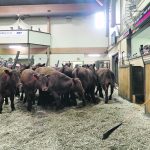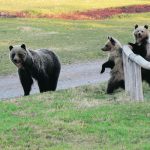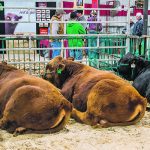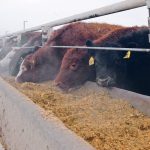Beef cattle

Price peaks require smart livestock marketing

Funding to help reduce large carnivore conflicts
Grizzly bears in particular have expanded their range further east from the Rocky Mountains during the past few years
CALGARY — A program that helps producers minimize conflicts with large carnivores such as grizzly bears, wolves and cougars in a key part of southwestern Alberta will receive $700,000 over five years from the provincial government. Grizzly bears in particular have increasingly been expanding their range further east from the Rocky Mountains during the past […] Read more
Implants seen as climate solution

Producer sets out to counter livestock myths
Survey will gather data from 1991-94 and 2016-19 about all aspects of forage production from seeding to the final crop
CALGARY — A researcher is offering $200 to each Saskatchewan cattle forage producer who completes an online survey he expects will help counter what he called false greenhouse gas narratives targeting the beef industry. Judson Christopherson says he hopes to determine if the amount of carbon that’s being sequestered in soil by forage crops in […] Read more
More BSE-era trade irritants may soon disappear
Canfax report

Big futures trades harder in all-electronic world
Report concludes all-electronic trading has not affected the cost per trade, although pit trading did add an option value
WINNIPEG — Who were the winners and losers when Chicago shut its live trading floors for livestock futures and sent everything to the electronic world? That’s a question two economists at the U.S. Commodity Futures Trading Commission have attempted to answer in a new article in the American Journal of Agricultural Economics. Large futures users, […] Read more
Man. livestock show says no to straw bedding
The high cost of managing the material is given as reason for banning it from this year’s Manitoba Royal Winter Fair
Anyone who beds animals at the Royal Manitoba Winter Fair this year won’t be doing it with straw. The Provincial Exhibition of Manitoba, which holds the major agro-tourism event in Brandon each year, says straw animal bedding will no longer be used at its events due to the cost of dealing with the used material. […] Read more
Intensification seen as best option
New study finds that intensifying cattle operations has less impact on the environment than starting new elsewhere
A new study by the Breakthrough Institute shows that location of beef production operations can have a significant impact on the carbon footprint of the sector. Intensifying production where it makes most sense has the lowest impact, according to the study, and supports research showing that grain-finished beef has a lower carbon impact than grass-finished […] Read more
Time, costs limit rotational grazing adoption
There are many terms related to the practice, which a researcher says should be standardized to improve consistency
Cost and lack of knowledge are two of the biggest barriers to rotational grazing, according to preliminary data studied by Brook McWherter, a natural resource scientist at Dalhousie University. Time commitment and/or access to labour, as well as available acreage, were also noted as barriers by Farm Resilience Mentorship Program (FaRM) participants. The study aims […] Read more




